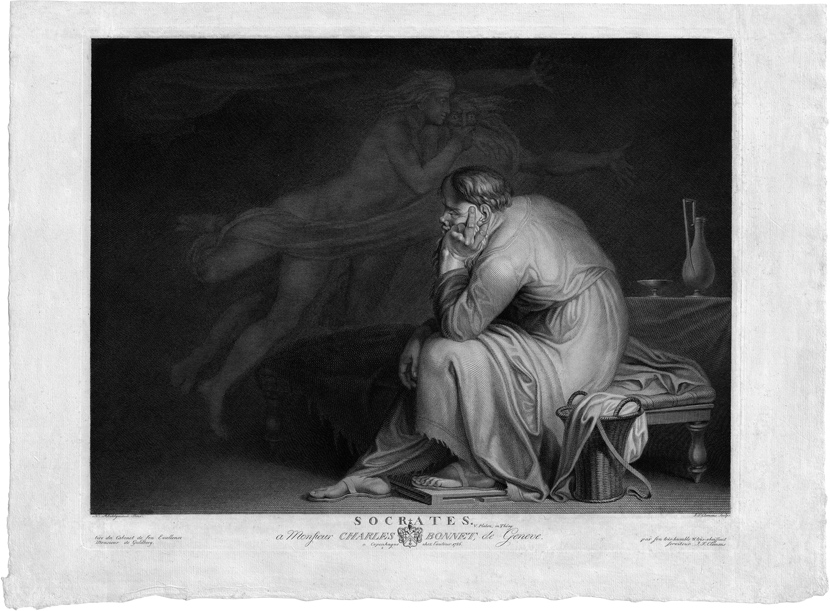Loading the page ...
Johan Frederik Clemens
(1748 Gollnow – 1831 Copenhagen)
Socrates. Engraving. 37.8 x 47.8 cm. 1786. Nagler p. 569, Le Blanc 8, Leo Swane, J.F. Clemens: Biografi samt Fortegnelse over hans Kobberstik, Copenhagen 1929, 223 V.
Johan Frederik Clemens, who hailed from Germany, was one of the most successful engravers of his time. As a teacher at the Copenhagen Academy he made a major contribution to the spread of printmaking in Denmark. The portrayal of the pensive philosopher Socrates is a good illustration of a series of works Clemens produced during his lifetime after designs by the neoclassical Danish painter, Nicolai Abraham Abildgaard (1743–1809). The present work, which Clemens has transferred with esprit and technical finesse to the printmaking medium, is based on an oil painting Abildgaard made in 1784 (now in Ny Carlsberg Glyptotek, Copenhagen), It was displayed in 1787 at the annual exhibition of the Berlin Academy, where it was described by Daniel Chodowiecki, among others, as one of the year’s outstanding works.
The enigmatic scene illustrates the phenomenon described by Socrates as the effect of the daimonion, a kind of inner voice or conscience which influences people in their moral acts. In the visual arts the daimon has often been portrayed as a kind of angel-like being or guardian spirit which accompanies human beings or whispers words of advice in their ear. In Clemens’s visualisation of the Socratic daimonion two such spirits appear in the form of shadows in the background; on the left a genius, who must be interpreted as a good daimon, apparently succeeds at the very last minute in clamping his hand over the mouth
of his evil, furious looking counterpart so that the latter’s bad advice can no longer enter the ear of the pensive philosopher. Abildgaard’s interpretation is highly original. The stocky man, described by Michel de Montaigne as the “master of all masters”, is sat on a stool with an introspective and somewhat surly look on his face as he lets his thoughts run free.
A very fine, contrasting impression with mostly wide margins, partly with deckle edges. Only minor ageing, otherwise in mint condition. The engraving is exceedingly rare. From the collection of Benjamin Wolff (1790 Copenhagen – 1866 Engelholm, Lugt 420, without stamp).
Contact us for further information